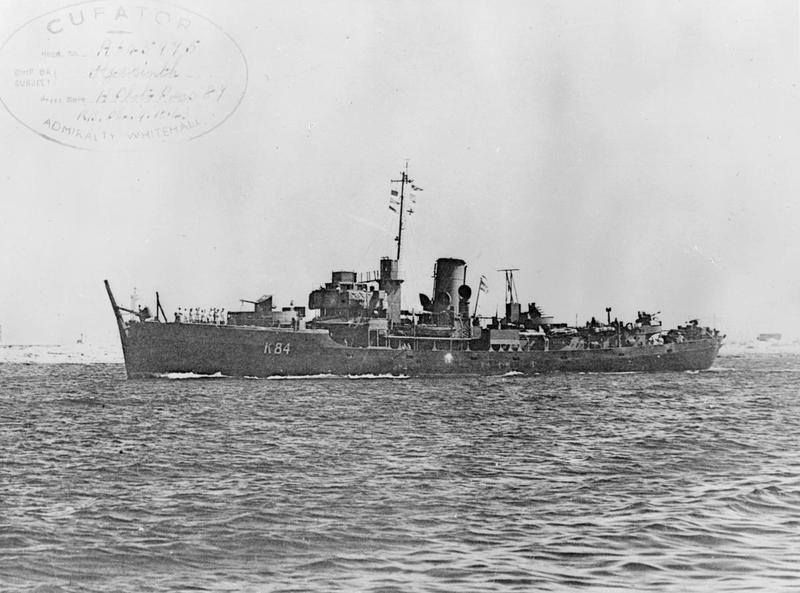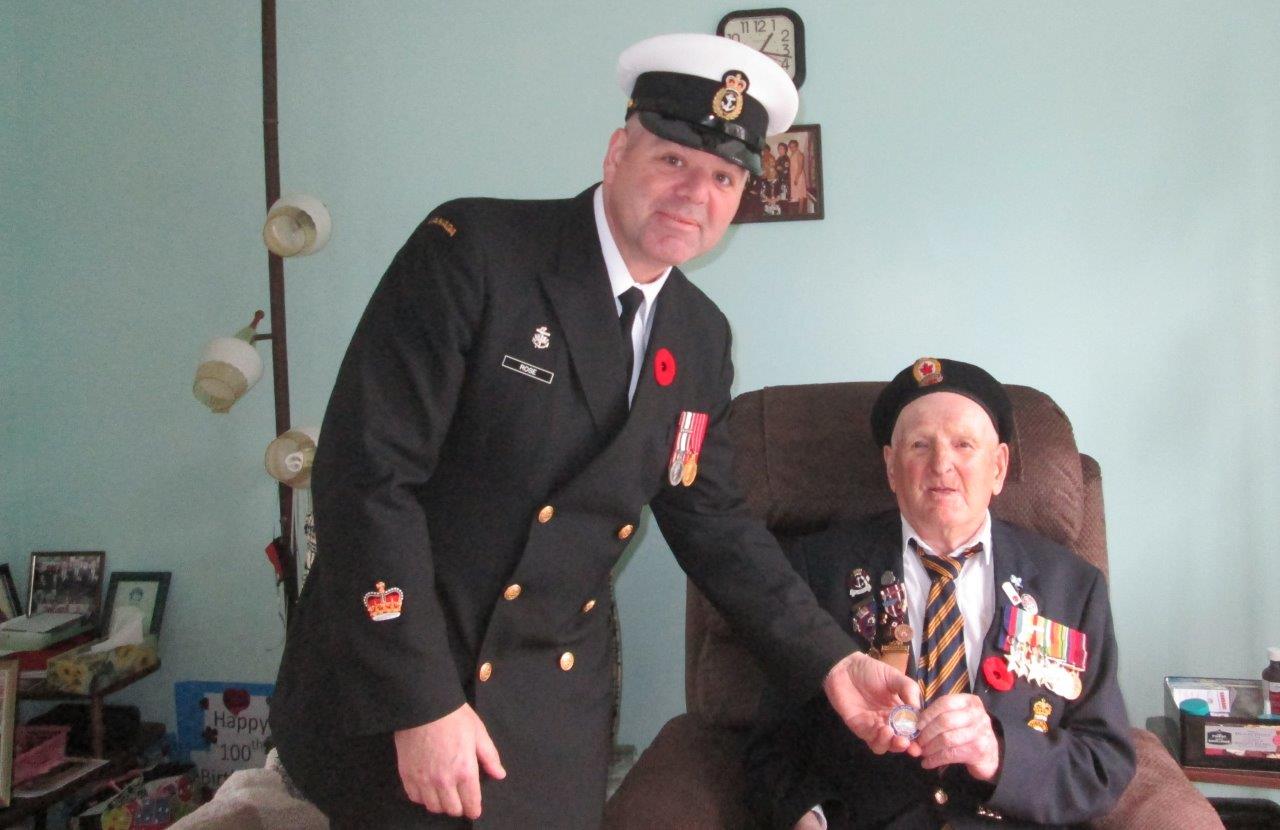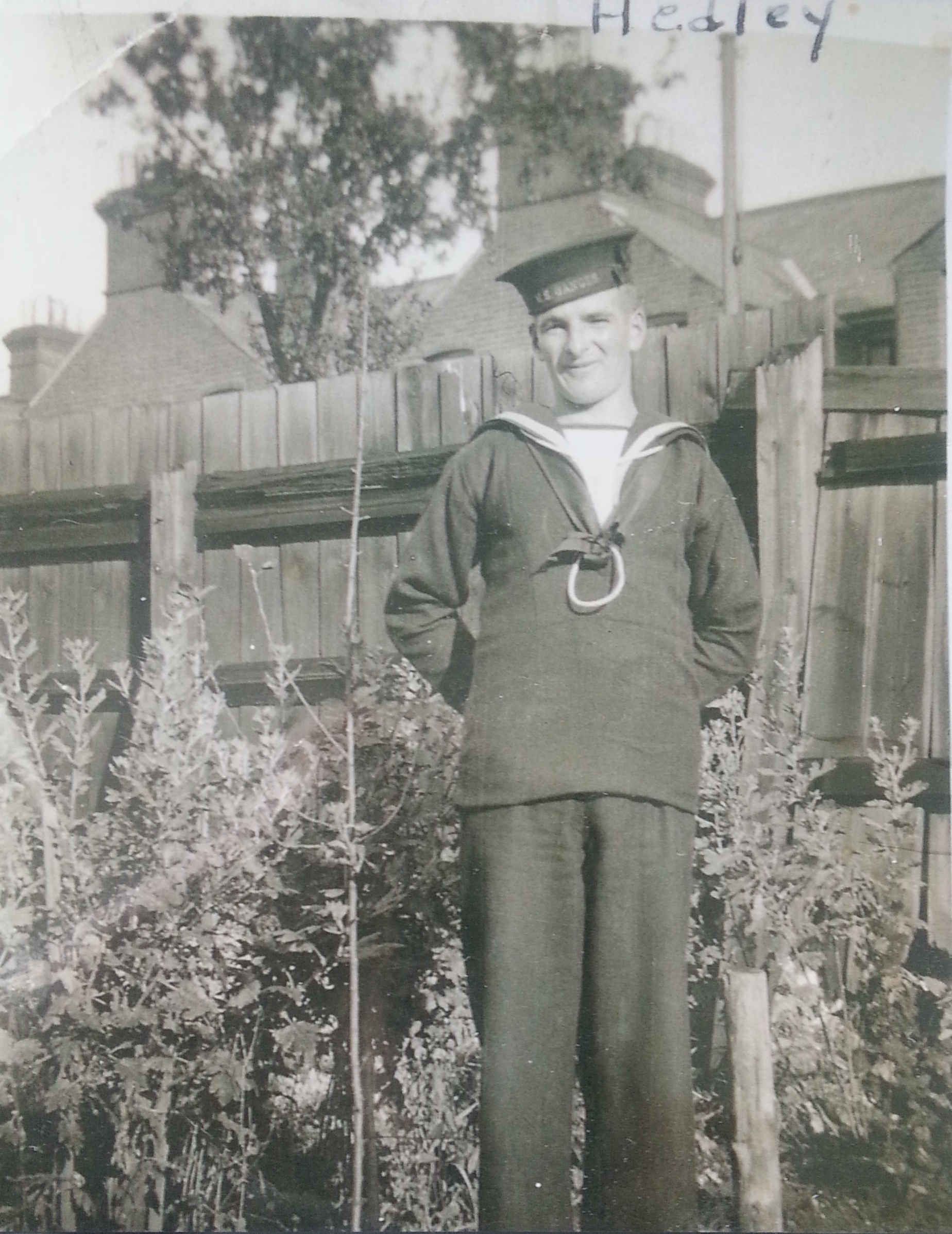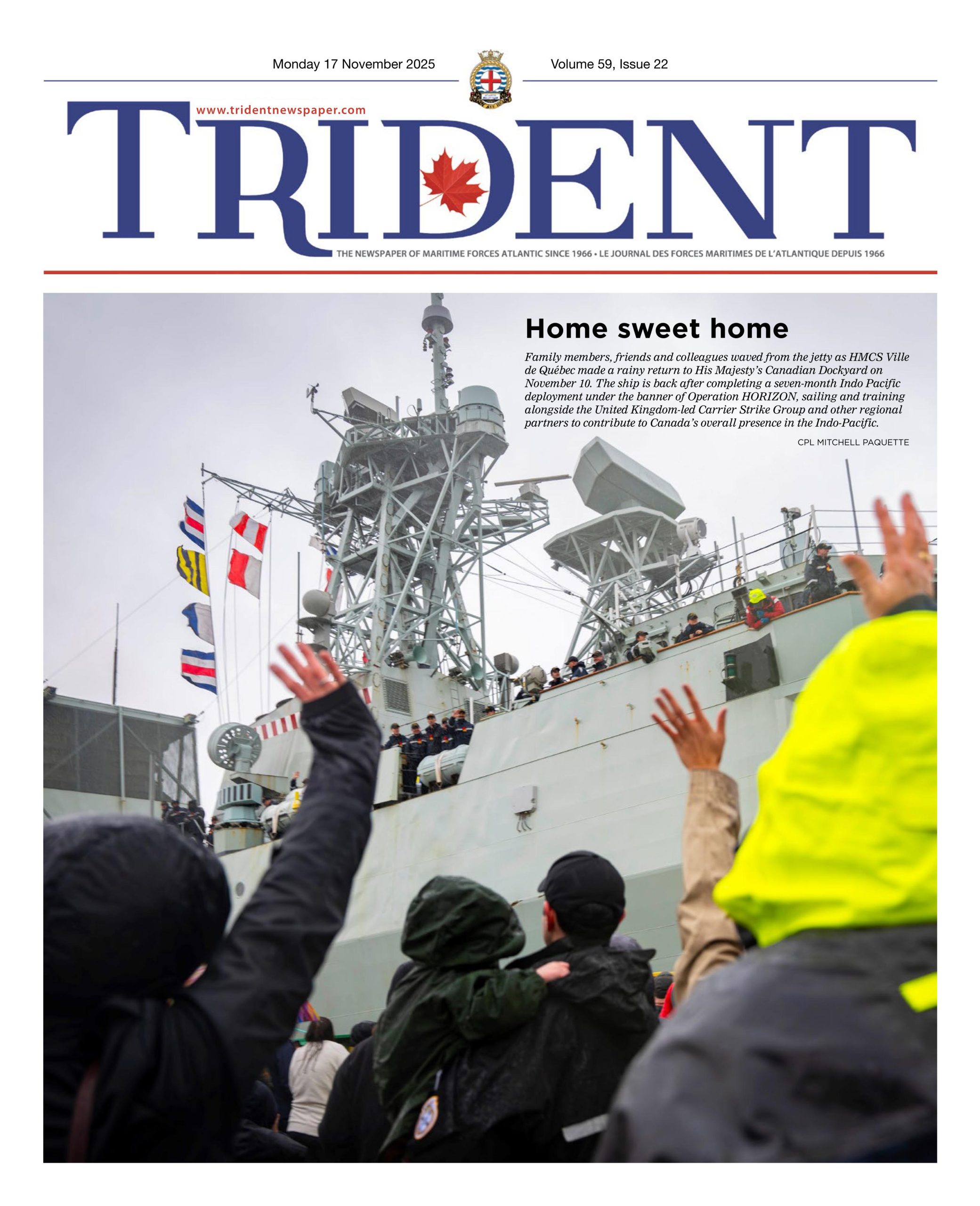
Second World War RN veteran recalls wartime service
By PO1 Wayne Rose,
NFS(A)
Newfoundland native AB (ret’d) Hedley Lake, now 100 years old and a resident of Fortune, NL, describes his wartime service in the Royal Navy with fellow Newfoundlander, PO1 Wayne Rose. AB Lake’s wartime experiences included patrols in the Mediterranean, and surviving the sinking of SS Caribou in October 1942.)

SUBMITTED
Born on August 12, 1918, Hedley Whitfield Lake grew up and was a farmer in Fortune, NL. After the war broke out, he was recruited as part of the 10th contingent of Newfoundlanders destined for service in the Royal Navy. He signed up for King and Country on July 28,1940. He left his hometown of Fortune onboard the MV Home, becoming seasick for the first and last time, and once in St. John’s he boarded the SS Nerissa. (That ship was torpedoed and sunk on April 30, 1941 by U-522.) Lake sailed for 21 days in a convoy to England where he landed in South Hampton and was assigned to HMS Ganges for training.
After completing his 10 weeks of seamanship, gunnery and drill he was sent to Devonport and drafted to Bristol for about a month. He was issued with tropical gear and boarded SS Salween. Not knowing his destination, he knew it was somewhere warm because of the kit he was issued. There were stops in Freetown, where the sailors threw nickels over the side for the locals to dive and retrieve, and also in Durban, he went ashore for a brief period and took a ride in a rickshaw. After transiting the Red Sea, Suez Canel, Port Said, the ship arrived in Canopus where Lake was trucked to his new homeport of Alexandria on February 4, 1941 to join the crew of HMS Hyacinth (K84), a flower class corvette.

SUBMITTED
Hyacinth served in the Eastern Mediterranean where she protected the Palestine coastline and escorted numerous convoys along it. She also took part in the Malta convoys. Hyacinth was a part of the 10th Corvette Group of the Mediterranean Fleet based in Alexandria together with her sister ships Peony and Salvia.
Trips to Cyprus, Beirut Lebanon and assisting in the defence of Tobruk kept OS Lake closed up most of the time. He remembers the ammunition ship Clan Fraser getting bombed in Piraeus and one of the officers on the bridge getting killed from the massive explosion that devastated the port. He and the crew spent a night on a beach when Hyacinth was grounded near Famagusta, Cyprus, Hyacinth was damaged by four aerial torpedoes and the next morning the crew boarded Hyacinth and Peony and Salvia towed her back to Alexandria for repairs.
OS Lake was promoted to Able Seaman on October 28,1941. He was billeted in the seaman’s mess up forward below the fo’c’sle but slept on the upper decks frequently due to the heat and general lack of space. During action stations he was part of the starboard depth charge throwers crew on the quarterdeck during ASW and during AAW he was part of the three-inch main gun crew on the fo’c’sle when attacked by Italian/German aircraft. The food wasn’t great due to wartime rationing, but the Jack Dusty did his best. They dried their washed clothes in the engine room and there was a native of Malta who cooked for them on a small stove back aft.
AB Lake had three attacks of appendicitis that got him landed and admitted to hospital for surgery, spending 13 days in hospital. During his recovery he was a sentry on gate duty for a month before being assigned on June 20, 1942 to the battleship HMS Queen Elizabeth (31000 tons compared to Hyacinth’s 1000 tons) that had been damaged in a sneak attack by Italian manned torpedoes on December 19, 1941. She was being escorted to Norfolk, USA at a speed of five knots for repairs and AB Lake was a passenger who was being posted to a new type of amphibious landing vessel, the LST 303.
Arriving in Norfolk on September 6, 1942, he remained part of Queen Elizabeth until September 30. Posted to LST 303 on October 1, he traveled to New York to join her. Granted 28 days of leave, he met up with another Newfoundlander from Fortune, Mack Piercey while in the breakfast lineup at the Brooklyn naval yard. Although AB Lake wasn’t due for his leave, Mack was able to talk their way into traveling to Fortune together. Arriving in Sydney, NS, Mack met up with his brother Harvey, who was in HMCS Medicine Hat. Like any sailor reunion, they indulged in a few libations before Mack and Hedley boarded SS Caribou on October 13.
At 0351 NST, U-69 torpedoed the Caribou sending her to the bottom. Of the 237 total number of crew and passengers, 127 perished. Luckily Mack and Hedley survived after spending more than four hours in the cold water. After spending a week in Sydney at the Jubilee Hotel, the men were transported to Port aux Basques on the SS Burgeo. They arrived in Fortune to enjoy their 28 days of leave. AB Lake noted he lost all his souvenirs including photographs of Hyacinth, and the pyramids, as well as a German Luger.
With the 28 days nearly complete, Mack wired the RN to inform them of the Caribou incident to request an extension of leave. The return telegram stated, “Extension not granted. Unless unfit to travel.” AB Lake told Mack, “We’re still in the Navy, we gotta go back”. They never met again until after the war.
AB Lake arrived in New York and met LST-303 to further his training. He was assigned the role of Quartermaster and told he was on watch right away. The 1st Flotilla departed New York, with a stop in Hamilton, Bermuda, heading for the Mediterranean. They stopped in Gibraltar to fuel and headed off for training with the British 8th Army in preparation for Op HUSKY.
LST-303 left Ferryville, Tunisia with a load of Sherman tanks and lorries on July 8, 1943, headed for the invasion of Sicily. They were part of the Eastern Task Force landing at Bank South. They ferried supplies back and forth to North Africa, assisting the 8th Army.
LST-303 took part in the invasion of the Italian mainland at Salerno on September 9. The Italians had reached an armistice with the Allies. The Germans now manned the defensive positions and the Allies were tested.
Aboard were Royal Engineers, who when the ramp went down, marked mines to establish a path for the tanks and lorries to land on the beach. They transited back to North Africa bringing more troops and supplies and encountered many bombing runs by the German air force.
With the Gustav line holding up advancement, the Allies prepared to land at Anzio on January 22, 1944. LST-303 carried DUKW boats loaded with dismantled 25-pounders and troops. After unloading, they began to ferry lorries loaded with empty jerry cans to Naples and return with lorries loaded with full jerry cans full of petrol, all whilst getting bombed by the Germans.
LST-303 was next headed for South Hampton, England to begin training with Canadian troops for the eventual landing at Juno/Sword beach on D-Day as part of the Assault Force S 1st LST (2) Flotilla. After unloading their Sherman tanks and lorries on Juno/Sword beach, they were immediately loaded with stretcher bearers and wounded and transited back to South Hampton to unload the wounded. They continued to ferry back and forth from England, but were damaged in a fierce three-day storm around June 19.
After beaching, LST-303 was given temporary repairs and towed back to London after the storm where she was repaired at the London Docks as V1 doodlebugs or buzz bombs were dropping on London. People would hear the chug chug of an engine, silence, and then an explosion. AB Lake narrowly missed such a fate when the bar where he had been with friends was destroyed by shortly after they had left.
After repairs, LST 303 continued to transit back and forth to Normandy and as the beachhead broadened, LST 303 ferried troops and supplies as far as the Scheldt and into Antwerp.
Eventually AB Lake and four other Newfoundlanders were landed and began the process of returning home to Newfoundland. He was fitted with a new suit and sailed to Halifax on the ocean liner Queen Elizabeth. He took another ship to St. John’s where he made his way back to Fortune, NL, completing his war service.






